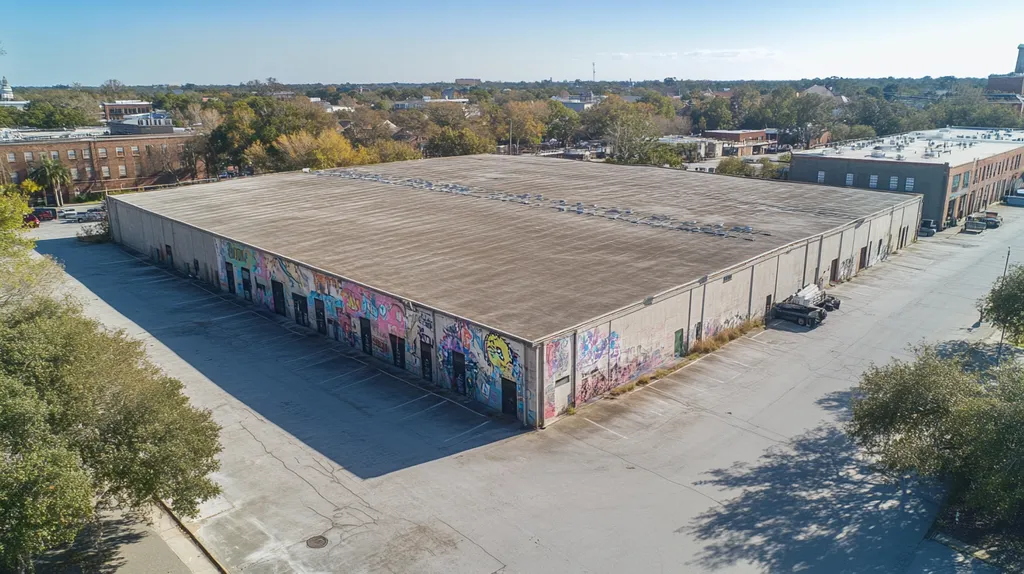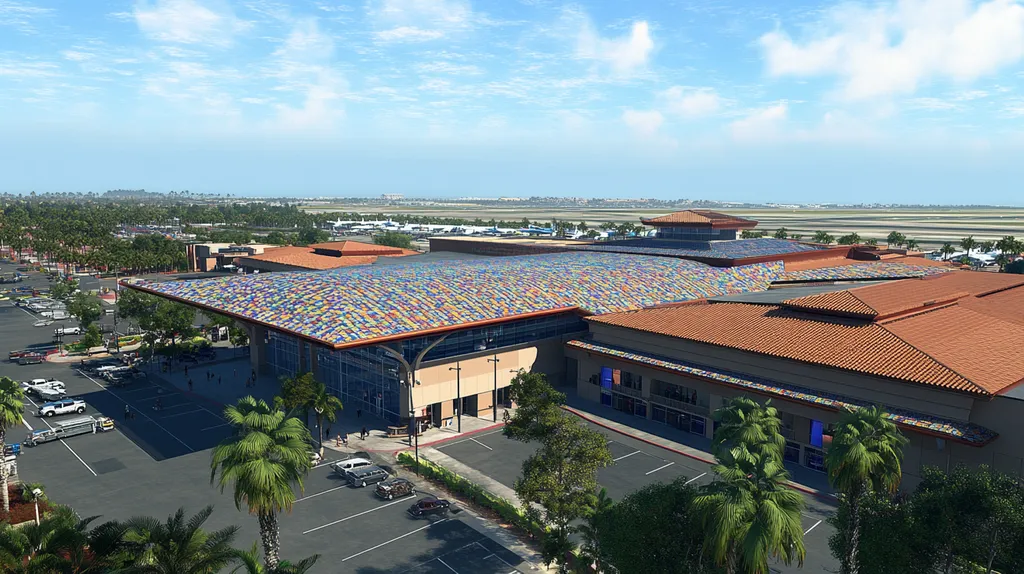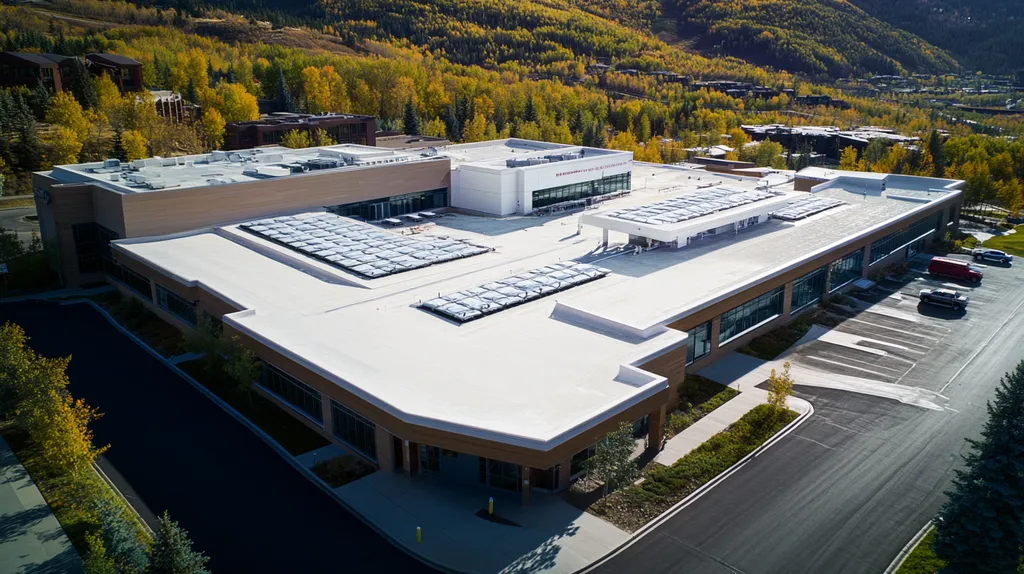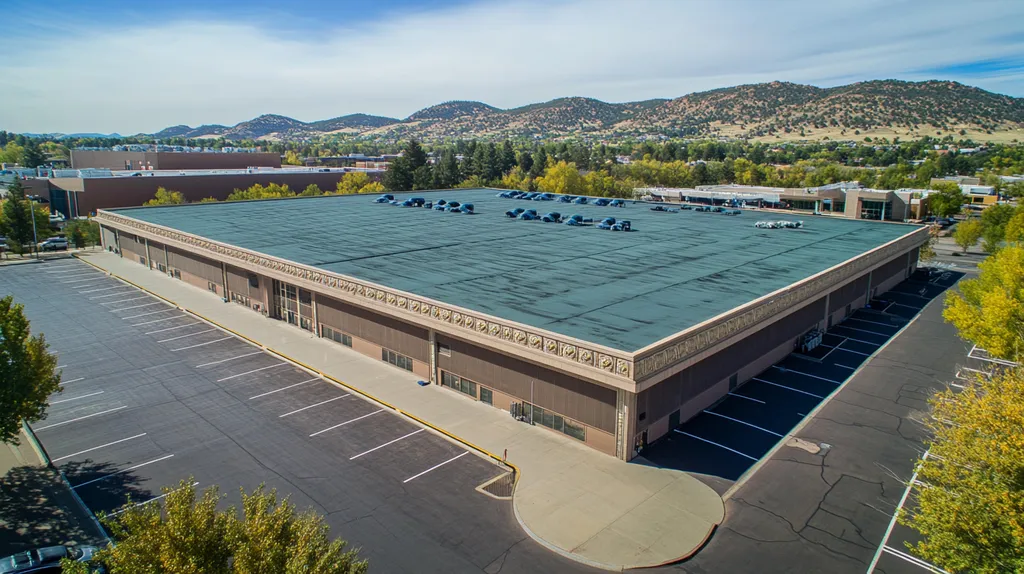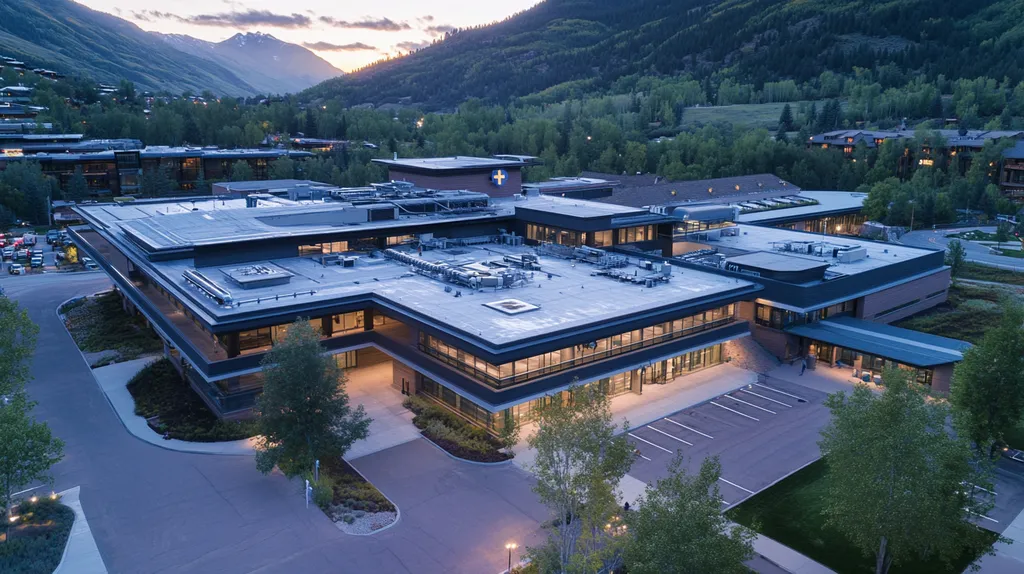In the high-stakes world of commercial roofing, a staggering 70% of warranty claims get rejected due to misunderstandings about material coverage. This oversight costs property owners millions annually in unexpected repairs and replacements.
While manufacturers tout comprehensive protection for their roofing materials, the fine print often tells a different story. From excluded environmental damages to strict maintenance requirements, these warranties can leave building owners exposed to significant financial risks.
This analysis exposes the systemic flaws in current warranty practices and presents data-driven solutions for property owners seeking genuine protection for their roofing investments.
SECTION 1: CURRENT PRACTICES
For commercial property owners, there’s no room for ignorance when it comes to roofing materials and warranties. Shockingly, a whopping 70% of warranty claims get rejected, primarily due to misunderstandings of what’s covered. With substantial financial implications on the line, navigating the types of warranties, their durations, and the necessary maintenance is not just important—it’s essential. This section dives into these key elements and shows how they impact both warranty validity and the overall performance of the roof.
Types of Commercial Roof Warranties
Commercial roof warranties can generally be broken down into two main categories: material warranties and workmanship warranties. Material warranties protect the roofing materials themselves, ensuring they’ll hold up as promised. Meanwhile, workmanship warranties zero in on the installation quality, assuring property owners that the roofing system is properly applied and adheres to industry standards.
Some manufacturers roll these two types into one, offering what’s known as combined warranties. These comprehensive options can deliver a robust safety net for property owners, but it’s crucial to scrutinize the specifics—coverage can differ significantly from one manufacturer to another.
In addition to standard offerings, there are specialized warranties that cater to specific roofing systems or innovative materials. Understanding the distinctions allows property owners to select the most suitable option for their building’s unique needs.
Ultimately, navigating the complexities of various warranties isn’t just smart—it can save property owners from financial headaches and ensure long-term roof performance. A meticulous review of warranty details can be the difference between a secure investment and a costly gamble.
Standard Warranty Durations and Coverage
The lifespan of commercial roof warranties varies widely, typically stretching from 5 to 30 years. Most standard warranties cover periods of 10 to 20 years, depending on the roofing material and the manufacturer’s reputation. This timeframe is critical—it often dictates how long property owners can expect the roof to perform without incurring additional costs.
While most warranties cover defects in materials and manufacturing, some sneaky exclusions can catch owners off guard—damages from improper maintenance or adverse environmental conditions often fall outside the coverage. Knowing these pitfalls is essential for property owners to sidestep unexpected expenses.
A word of caution: shorter warranty periods often indicate lower-quality materials, leading to greater long-term repair costs. Opting for warranties that extend longer can yield peace of mind and greater financial security down the road.
Considering warranty duration is essential, but getting granular about coverage specifics is just as critical. Engaging directly with manufacturers can clarify any confusing points, allowing property owners to make informed choices that align with their roofs’ expected longevity and durability.
Maintenance Requirements for Warranty Validity
Regular maintenance isn’t just a good idea—it’s often a warranty requirement. This includes routine inspections, cleanings, and timely repairs. Manufacturers typically insist that property owners keep documented maintenance records, ensuring compliance and protecting against potential warranty voidance.
A major misstep property owners make is neglecting to hire qualified professionals for these maintenance tasks. Many warranties dictate that inspections and repairs must be done by certified contractors to meet necessary standards. Skipping these steps can lead to denied claims when issues arise.
Neglecting required maintenance not only threatens warranty coverage but can also lead to premature roof failure. Regular upkeep is crucial for early issue detection, extending your roof’s lifespan. Developing a consistent maintenance schedule is vital for protecting both the warranty and the roof’s long-term integrity.
Committing to proper maintenance protocols can mean significant savings in the future. In the end, effective maintenance strategies are key to keeping warranties intact while maximizing the performance of a roofing system.
SECTION 2: SYSTEMIC ISSUES
The world of commercial roof warranties is riddled with potential pitfalls that can leave property owners in a precarious financial position. Astonishingly, almost 70% of warranty claims are rejected, mainly due to misunderstandings about what’s really covered. As roofing systems grow more complex, it’s vital for stakeholders to grasp these critical issues to protect their investments. This section delves into the limitations of material-only warranties, the gaps in workmanship guarantees, and the often-overlooked inadequacies in labor and material coverage.
Limitations of Material-Only Warranties
A common misconception is that material-only warranties provide all the protection a property owner might need. In reality, these warranties usually cover only defects in the materials themselves, not production or installation issues. This narrow scope can lead to a rude awakening.
Consider this: if a leak occurs not because of a faulty material but due to a botched installation, the costs to fix it may fall squarely on the owner’s shoulders. This can transform what seemed like a wise investment into a financial headache.
Moreover, the fine print can often blindside property owners who may overlook critical limitations in coverage terms. This could leave them responsible for repairs they thought were included in the warranty.
To avoid being caught off guard, property owners should demand explicit clarity from contractors about what their material-only warranties actually cover, ensuring they’re aware of any potential loopholes.
Workmanship Warranty Gaps and Exclusions
Workmanship warranties aim to protect property owners from the fallout of installation mistakes, but too often, they come with hidden gaps and exclusions. Commonly, damages caused by harsh weather or wear and tear over time are excluded, leaving owners in a lurch.
If an installation error manifests years later, property owners may have no recourse, which can undermine their initial investment. Understanding these exclusions is crucial to avoid a rude awakening down the line.
The duration of workmanship warranties is another area of concern, as it varies significantly from contractor to contractor, leading to inconsistencies in protection. Property owners must dissect these warranties closely to grasp the timeframe and specific limits on coverage.
Recognizing these gaps empowers property owners to make informed decisions and even negotiate better terms with their roofing contractors.
Inadequate Labor and Material Coverage
A staggering number of commercial roofing warranties fall short when it comes to covering labor and materials needed for repairs. The focus often leans heavily towards materials while neglecting the actual repair costs, leaving owners to bear hefty expenses when damage occurs.
For instance, a warranty might assure that materials will perform as promised, but in the case of a leak, it might not cover the expenses for labor involved in replacing the damaged sections. This discrepancy can create financial pressures, especially for facility managers on tight budgets.
Additionally, inadequate labor coverage raises red flags about the quality of workmanship expected from contractors. If labor isn’t properly covered, it creates a loophole that can incentivize subpar installation methods and ultimately compromise the longevity of the roof.
To ensure holistic protection for their roofing investments, property owners should seek warranties that clearly include provisions for both labor and materials.
SECTION 3: MISSED OPPORTUNITIES
Many property owners unintentionally devalue their commercial roof warranties by overlooking key requirements that safeguard their long-term interests. Strikingly, more than 50% of roofing warranties become void simply because specific stipulations weren’t met. Recognizing these missed opportunities is essential for ensuring comprehensive protection of roofing investments. This section examines the pitfalls of ignoring no dollar limit warranties, neglecting routine maintenance, and bypassing essential approvals from manufacturers and contractors.
Overlooking No Dollar Limit Warranties
No dollar limit (NDL) warranties provide substantial coverage that is frequently undervalued. These warranties eliminate financial caps on repairs or replacements, delivering essential peace of mind. Companies equipped with robust NDL warranties can avoid out-of-pocket expenses that could soar into the tens of thousands when unexpected roofing problems arise.
Unfortunately, many property owners mistakenly assume that standard warranties suffice, leaving them vulnerable to significant costs. If mishaps occur, those without NDL coverage might grapple with crippling repair bills, whereas those with NDL protections benefit from comprehensive coverage without the financial strain.
Moreover, NDL warranties usually encompass provisions for both materials and workmanship, ensuring that issues are resolved efficiently. Property owners should prioritize these warranties as a cornerstone of reliable coverage, since neglecting it can jeopardize both direct costs and the roof’s durability.
Investing in an NDL warranty is not just smart; it’s a pragmatic strategy that mitigates future financial risks. A well-chosen NDL warranty turns roofing from a mere liability into a strategic asset for effective budgeting and facility management.
Neglecting Regular Inspection and Maintenance
Regular inspections and maintenance are crucial to preserving a valid roofing warranty. Roofing systems require systematic evaluations to catch and resolve issues before they develop into costly repairs. Ignoring scheduled inspections not only risks voiding warranty coverage but can also lead to hefty expenses.
Research shows that properties with regular maintenance programs can enjoy roofs that last 30% longer. This statistic underscores the drastic consequences of neglecting a proactive approach to roofing upkeep, translating into more frequent and expensive repairs down the line.
Regular inspections can spot minor issues—like small leaks or ponding water—that, if ignored, can escalate into major problems. Diligently maintaining a roof not only extends its life but saves property owners from larger financial burdens in the future.
Investing in professional roof inspections is a wise decision that pays off substantially. By implementing consistent maintenance practices, property owners uphold not only their roofing warranties but also the integrity and performance of the entire roofing system.
Ignoring Manufacturer and Contractor Approval
Adhering to manufacturer and contractor requirements is essential for keeping roof warranties valid. Failing to comply with these stipulations can lead to costly voidance. Many warranties state that only approved contractors should handle installations and maintenance—which means a watchful eye is a must.
For instance, opting for unapproved materials or contractors could directly lead to rejected claims, leaving property owners high and dry when issues surface. This predicament is a common source of conflict in the roofing business, often leaving owners realizing too late the consequences of their choices.
Working with reputable contractors, who maintain strong relationships with manufacturers, ensures access to superior training and quality assurance. These partnerships not only enhance installation but also lower the chances of future problems, safeguarding investments.
Ultimately, ignoring manufacturer and contractor approval can throw a wrench in a property owner’s financial plans. It’s imperative for property owners to grasp warranty stipulations, adhere strictly to them, and collaborate with qualified professionals for all roofing endeavors.
SECTION 4: ROOT CAUSES
When it comes to commercial roof warranties, the stakes couldn’t be higher. A single missed warranty claim can set property owners back tens of thousands of dollars in repair costs. Understanding the root causes of these issues—like unclear communication in warranty terms, inconsistent installation standards, and poor documentation—is crucial for safeguarding investments. This section sheds light on these underlying problems and how they threaten the protective promises that warranties should provide.
Lack of Clear Communication in Warranty Terms
The fine print in commercial roof warranties can be a labyrinth of jargon and convoluted clauses. Many property owners find themselves ensnared in the complexity, leading to misinterpretations that can have dire consequences.
For example, vague language around what materials are covered can leave property owners exposed when a roof failure occurs. If the warranty’s terms aren’t transparent, owners may unwittingly miss the specific conditions that could void their coverage.
This cloud of uncertainty not only fosters unnecessary expenses but can also lead to prolonged downtime as claims get tangled in bureaucratic red tape. A move toward clearer, simpler warranty documents could make a world of difference, empowering property owners to make informed decisions about their roofing investments.
Inconsistent Installation Standards
Installation quality is the backbone of any roofing system, yet the commercial roofing sector suffers from a glaring inconsistency in installation standards among contractors. This patchwork approach can lead to significant performance discrepancies, even among roofs that are outfitted with the same materials.
Take membrane layers as an example—an improperly applied layer can permit water infiltration, causing long-term damage. This inconsistency not only puts the roofing system’s integrity at risk but also complicates warranty claims when problems do arise.
Establishing industry-wide installation standards isn’t just a good idea; it’s essential. With standardized practices, property owners can ensure contractors meet a baseline of quality that better protects their investments and minimizes future headaches.
Insufficient Documentation and Record-Keeping
Effective warranty management hinges on comprehensive documentation—yet many property owners fall short in this department. Incomplete records about installation dates, maintenance logs, or inspections can create severe obstacles when filing warranty claims.
A lack of vital documentation can make it nearly impossible for owners to prove they complied with warranty conditions. This oversight often leads to denied claims or unexpected repair costs that could have been avoided.
Moreover, insufficient record-keeping can conflict with warranty stipulations that require regular maintenance evaluations. To navigate the warranty maze successfully, property owners must adopt robust documentation practices, equipping themselves to defend their claims and protect their roofing investments.
DATA DRIVEN EVIDENCE
In the fast-paced world of commercial roofing, the materials chosen and their warranties can significantly affect the lifespan of a roof—and the financial stability of a business. Alarmingly, data reveals that nearly 28% of commercial roofs fail within their warranty period. This reality emphasizes the need for careful consideration of materials, their costs, failure rates, and the essential role of maintenance to safeguard investments.
Cost Analysis of Warranty Types and Coverage
The cost implications of various roofing warranties can be staggering. While traditional warranties may cover materials for a decade, higher-grade options extend coverage to 20 or even 30 years. Choosing cheaper materials might seem like a savvy financial move initially, but this often results in steeper long-term expenses due to frequent repairs or early replacements.
Take, for example, a single-ply membrane roof with a limited warranty priced at $3.00 per square foot. Opting for a premium roofing system with a robust 25-year warranty could raise that price to $5.50 per square foot. Over the lifespan of the roof, the difference in warranty choices can lead to significant savings or financial losses.
It’s also crucial for property owners to consider the conditions that could void warranties, such as improper installation or irregular maintenance. These factors can drive up total costs if not managed properly.
Ultimately, a thorough analysis of warranty types and costs is essential. This empowers decision-makers to select roofing solutions that align with both immediate needs and future financial strategies.
Statistical Failure Rates of Roofing Materials
The statistical failure rates of roofing materials expose the vulnerabilities within the industry. Recent data highlights that nearly 25% of TPO roofs are prone to premature failure due to installation errors and material defects, while built-up roofs can leak as early as their fifth year. These failure rates indicate a troubling disparity between expected and actual performance.
In a comprehensive study examining various commercial roofing materials, the failure rates varied: EPDM roofs had a failure rate of about 15%, primarily stemming from environmental factors. In contrast, metal roofs, known for their longevity, reported corrosion-related failures nearing 10% when not appropriately maintained.
Understanding these statistics is vital for property owners. They not only highlight the risks associated with specific materials but also underscore the importance of quality installation practices and adherence to manufacturer guidelines.
Property owners who overlook these risks risk facing unexpected repair costs and downtime. Therefore, investing in reliable materials supported by solid warranties is essential—not just smart, but necessary.
Impact of Maintenance on Warranty Longevity
The connection between regular maintenance and warranty longevity is critical. Neglecting routine upkeep can drastically shorten the lifespan of roofing materials, often resulting in voided warranties. According to the Roofing Handbook, a well-maintained roof can last 10 to 15 years longer than one that is ignored.
A case study involving multiple commercial buildings reinforces this point. Properties with regular inspections and proactive maintenance schedules reported an average roof lifespan that extended by 30%, compared to roofs that received minimal care.
Simple maintenance tasks like clearing debris and conducting annual inspections allow issues to be addressed before they escalate into major problems. This dedication not only prolongs the roof’s life but also maximizes the value of existing warranties.
Thus, property owners and facility managers must make robust maintenance plans a top priority. This commitment not only enhances roof longevity but also protects warranty integrity, ultimately leading to significant cost savings over time.
SECTION 6: ALTERNATIVE SOLUTIONS
The stakes in commercial roofing have never been higher. With poor material choices and shoddy workmanship leading to an uptick in roof failures, property owners face soaring operational costs along with the threat to valuable assets housed within their buildings. To safeguard investments, it’s crucial to implement alternative solutions that strengthen commercial roofing warranties and ensure protection that lasts.
Implementing Comprehensive System Warranties
Comprehensive system warranties take a significant step forward in managing both roofing costs and performance. Unlike standard warranties that only cover materials, these robust options encompass the entire roofing system, offering a wider safety net against potential failures. By selecting warranties that include both labor and materials, property owners can shield themselves from those pesky hidden costs that often arise during damage claims.
These warranties typically outline specific performance criteria, ensuring materials meet established standards. The result? A roof that’s not just installed properly but also engineered to function efficiently. Moreover, integrating manufacturer and contractor warranties creates a unified front, simplifying the claims process and reducing complications when it’s time to file.
Comprehensive warranties also promote collaboration between property owners and roofing professionals. When expectations are clearly outlined, there’s a greater chance of meeting performance standards. This synergy results in enhanced durability and greater peace of mind for all stakeholders involved.
For contractors, embracing these warranties can offer a competitive edge in an overcrowded market—making them more appealing to property owners who are fatigued by limited coverage options that leave them vulnerable.
Enhancing Workmanship and Material Standards
Raising the bar for workmanship and material standards is essential in reducing both the frequency and severity of roofing failures. Contractors committed to adhering to best practices and choosing high-quality materials will see a direct correlation with the longevity of roofing systems. This commitment not only improves the performance of roofs but also curtails the long-term expenses tied to repairs and replacements.
One effective strategy is to standardize training programs for roofing professionals. Ongoing education and certification can boost skill sets and expertise in the latest installation techniques and technologies. A workforce that’s well-trained can significantly elevate the quality of roofing across the board.
Transparency in material selection plays a pivotal role too. Property owners should favor vendors who provide clear documentation on their products, including performance ratings and testing outcomes. This critical information helps owners in making informed selections that will impact their roof’s durability.
Additionally, enforcing stricter oversight during the installation process guarantees that all materials and workmanship meet or surpass the manufacturer’s specifications. Routine inspections help to uphold accountability, ensuring that all parties involved are adhering to the set standards.
Adopting Preventative Maintenance Protocols
Adopting preventative maintenance protocols is a game changer in preserving the integrity of commercial roofing systems. Regular inspections and timely maintenance can catch potential issues before they morph into costly repairs or replacements.
Implementing a structured maintenance plan allows for systematic evaluations of critical roofing components, such as flashings, seams, and drainage systems. Early detection of issues means property owners can initiate corrective measures while still under warranty protection.
Data-driven maintenance practices can even forecast repair needs based on historical performance and environmental conditions, optimizing both resource use and budget planning—enhancing overall operational efficiency.
Finally, fostering a culture of maintenance awareness among facility managers is vital. When maintenance becomes a priority, the lifespan of roofing systems can be significantly extended, ensuring compliance with warranty conditions and safeguarding valuable investments.
Moving Forward
With 70% of commercial roof warranty claims being rejected and billions lost annually to preventable failures, the stakes couldn’t be higher for property owners.
The data is clear: current warranty practices leave dangerous gaps in coverage while creating a false sense of security.
By implementing comprehensive system warranties, raising installation standards, and adopting data-driven maintenance protocols, property owners can finally secure genuine protection for their roofing investments.
The industry must move beyond material-only warranties toward holistic coverage that includes both labor and workmanship.
Until then, commercial properties remain vulnerable to catastrophic expenses that could have been prevented through proper warranty coverage and documentation.
FREQUENTLY ASKED QUESTIONS
Q. What are the types of commercial roof warranties?
A. There are two main types: material warranties and workmanship warranties. Material warranties cover defects in roofing materials, while workmanship warranties focus on the installation quality. Understanding these helps property owners select appropriate safeguards for their roofs.
Q. What are the limitations of material-only roof warranties?
A. Material-only warranties primarily cover defects in the materials, not issues from poor installation. This often leaves property owners vulnerable to unexpected repair costs if issues arise due to installation mistakes instead.
Q. How can missed maintenance affect commercial roof warranties?
A. Neglecting regular maintenance can void warranties and lead to costly repairs. Property owners must adhere to maintenance requirements to keep their warranties intact and ensure long-term roof health.
Q. Why is communication important in understanding roof warranties?
A. Clear communication around warranty terms helps property owners avoid misunderstandings. Vague clauses can lead to unexpected costs and disputes when claims are filed, making transparency essential.
Q. What are the statistical failure rates of commercial roofing materials?
A. Approximately 28% of commercial roofs fail during their warranty period, often due to installation errors or material defects. Understanding these risks is crucial for property owners when selecting roofing options.
Q. How do comprehensive system warranties benefit property owners?
A. Comprehensive system warranties cover both labor and materials, offering robust protection against repair costs. They outline specific performance criteria, ensuring quality and minimizing potential complications during claims.
Q. What common mistakes should property owners avoid regarding commercial roof warranties?
A. Property owners often overlook warranty stipulations, ignore regular maintenance, and fail to verify the qualifications of contractors. These missteps can lead to invalidated warranties and costly repair bills down the line.

